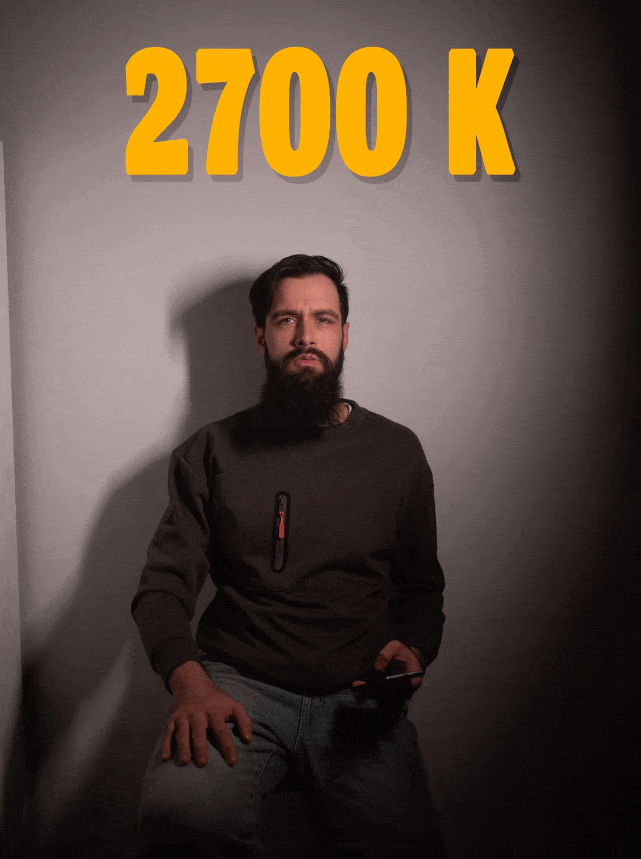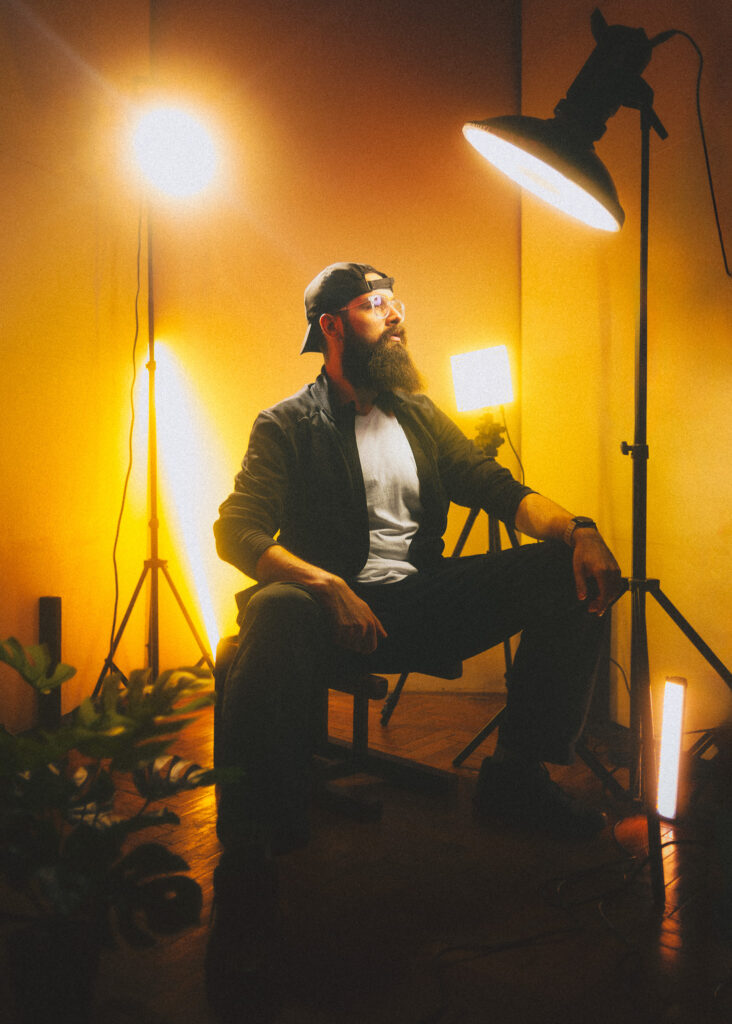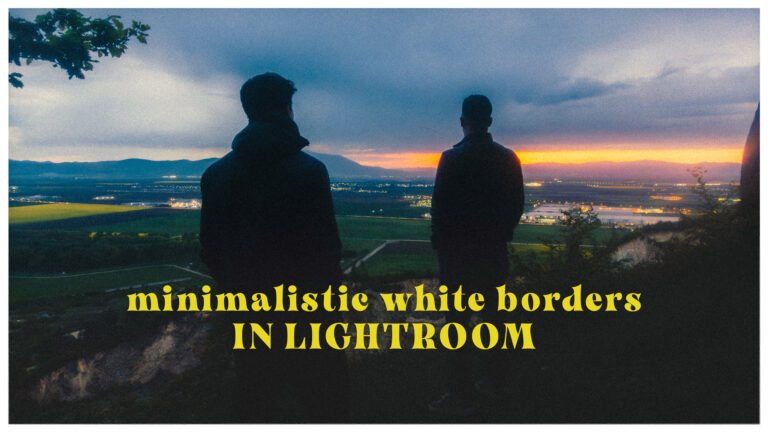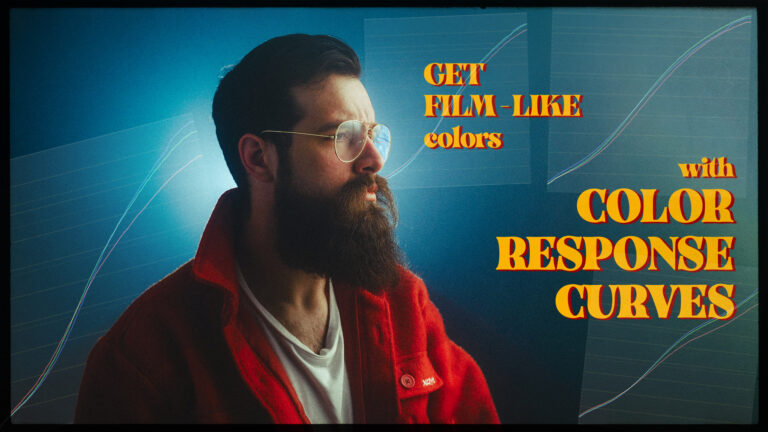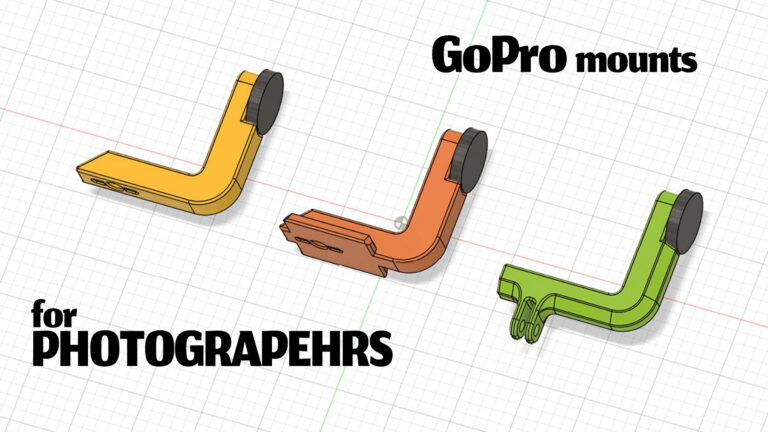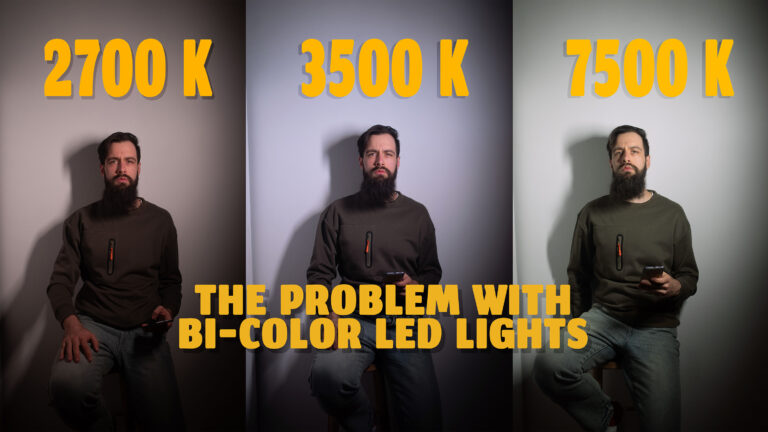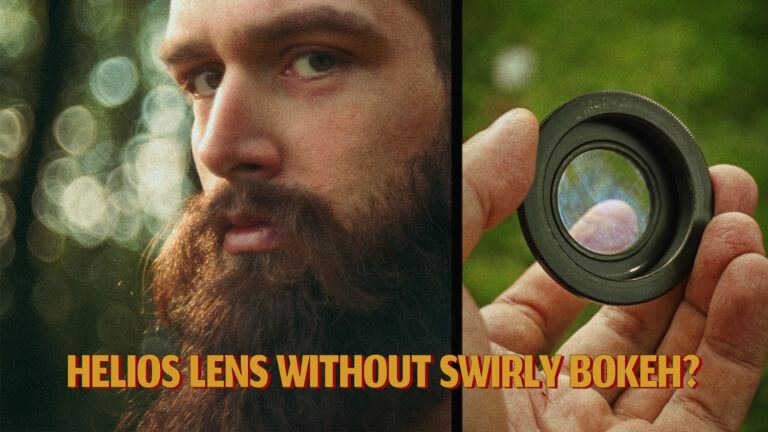Is your white light actually white? Or does it have a green tint?
So imagine this: You got your first LED light…. or third… it’s a nice one, it has Kelvin adjustments so you can turn the light warmer or colder, it might not be RGB, but you have big plans for it. You set them up and take some great photos. But while editing the images, you notice something is odd with the colors. You can’t put your finger on the exact problem, just that it’s harder to get the right tones, especially in the shadows. Or maybe the skin looks odd. The light is high CRI or at least that’s what it says on the box, and it cost a lot. What is the problem, and why are your colors off?
Well, let me explain because I had this exact problem. Your new LED lamp is most probably suffering from some color shifting. Most CCT LEDs do, and only a few of the lights that are on the market at the time of writing have a way to compensate for it. And they cost significantly more.
What are CCT COB Lights?
- CCT means Correlated Color Temperature These lights allow you to adjust the color temperature, usually from 2700K to around 7500K. They do this by pairing one LED chip that emits cold white light with one that emits warm light and balancing their power output to produce the light temperature that you want
- COB (Chip-on-Board) is a type of LED technology where multiple LED chips are packaged together tightly on the same board. This increases light output while reducing space and improving efficiency.
CCT COB LED Lights have boards with an array of Cold and Warm LED chips in a matrix, where you can set the color temperature you desire by balancing the amount of light the cold and warm chips are emitting. But if the light is not perfectly calibrated and the LEDs and high quality, some color shift may occur.
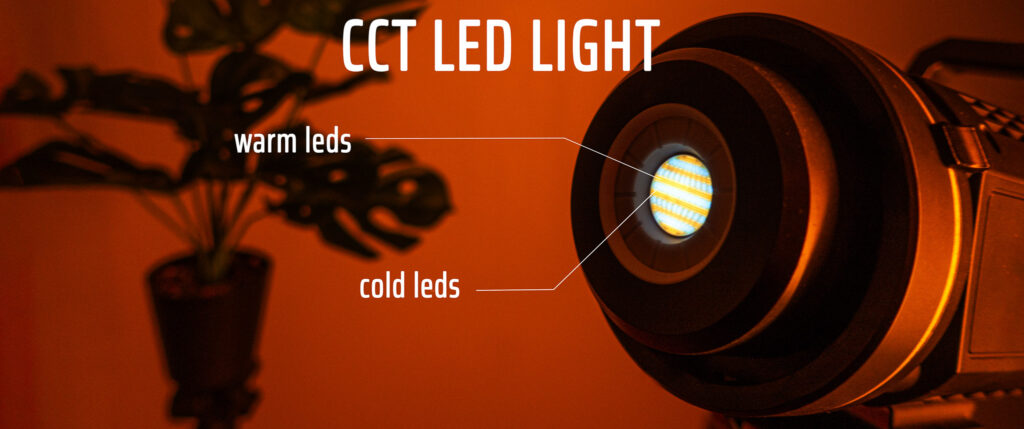
What is the color shift?
Color shift happens when the light source in your photography produces an unwanted tint, towards green or magenta. This shift is way more noticeable at the extreme ends of the color temperature spectrum when one of the LEDs in the pair is completely shut down. And there might even be a dropoff in the lights power
Instead of pure white light, you might see a green tint in your highlights and some magenta cast In the shadows where this light is not reaching. Not to mention that this issue can become trickier to fix in post-processing when using multiple lights that have different amount of tinting to them.
One light is not that hard to fix while editing your photos, but also 1 light is not enough most of the time to create interesting-looking images. And if you want to take some dynamic or moody photos, you are going to end up with multiple lights set to different Kelvin values and even the same model of light pushed to 2 different color temperatures might produce different tint shifts.
Oh yeah and as a bonus even if they are properly calibrated when they leave the factory, it is in the nature of these LEDs to shift a bit as they age.
How to check your lights
- The scientific but expensive method: Get a spectrometer, and adjust your light accordingly or at least ask for a refund quickly if the light is not up to spec. There is only one problem, is that they are expensive. The cheapest one I’ve seen is around 250$ on AliExpress, but they do go for a lot more. So do your research. The one I’ve seen a lot of professionals use is called Sekonic C-800, but I let you discover the price of this one on your own.
- The free & non-scientific method: In a blacked-out room, point your light toward a white wall or background paper and set your camera to the same kelvin value as the light. Go through the entire kelvin range of your light, and you can do some A/B comparisons between various temperature settings. It is even better if in the photo some random colored object and a human to see how the skin color is rendered as well.
You can also compare the calibration of the various models of lights that you own, and even compare them at various power outputs.
Demonstration:
I have 3 CCT lights. And I tested them all. It is annoying to do, and having a 225w light in your face at full power is rather painful. But here are my test shots:
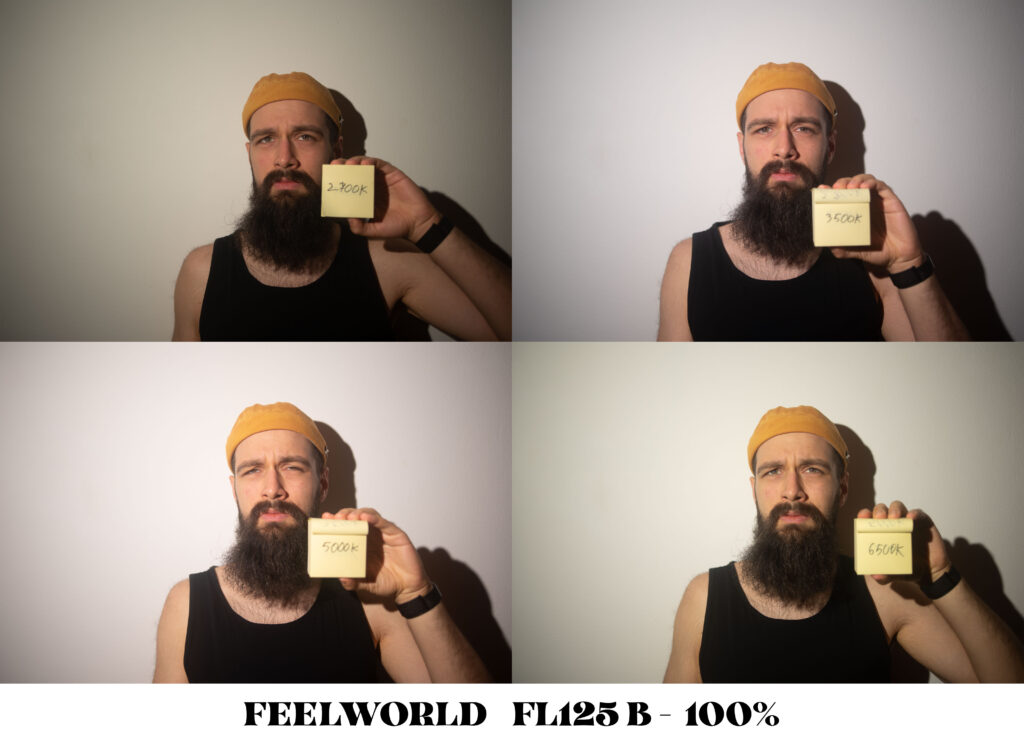
Starting with the Feelworld FL125 B. The color cast is visible and tinted green on both ends of the temperature range. In the middle of the spectrum, I would say is pretty neutral, but you can also see that the power output drops when the light is not using both the warm and cold LEDs. This means you will have to adjust the power output of the light if you change the light temperature in to maintain proper exposure on set.
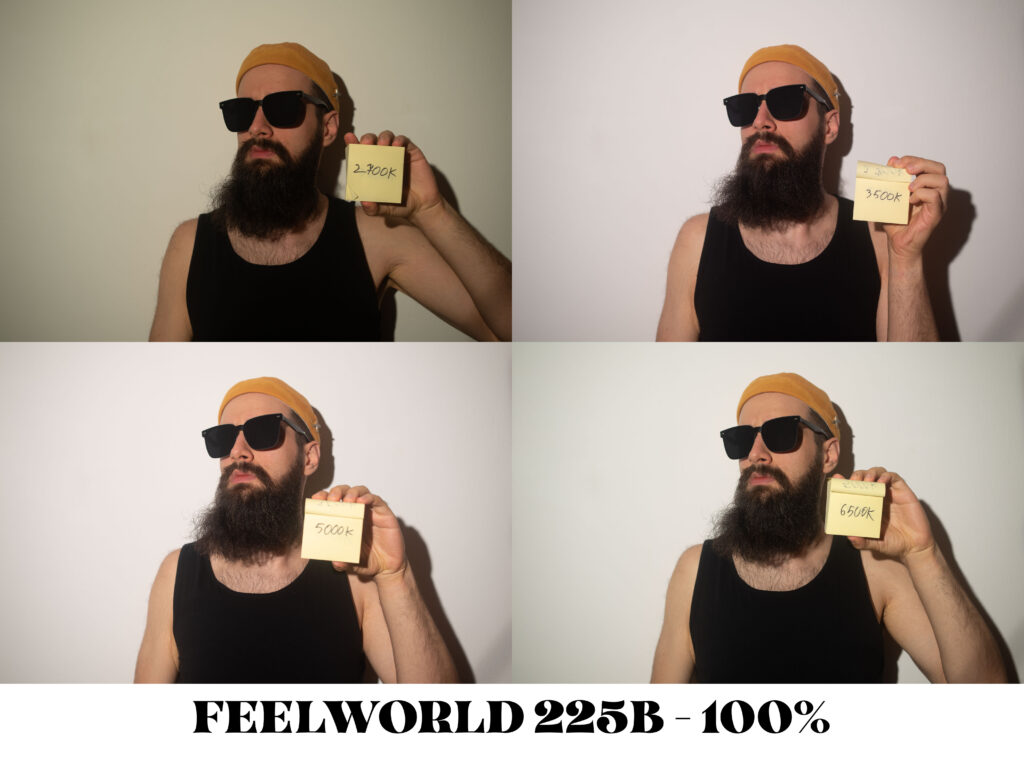
The more powerful Feelworld FL225B has a similar power dropoff at 2700K and 6500K but with significantly less color tinting at the 6500K setting.
I’m glad to see that the 2 Feelworld lights are similar in their color shifts, as this means they can be used together without a lot of aberrations IF I set them to the same color temperature. This is useful for classic studio portraits where you want white light, and rather disappointing if I want to play with cinematic or moody lighting in my shots and have them set to very different temperatures. More importantly, ill try to avoid the edges of the spectrum where the light switches off half of it LEDs.
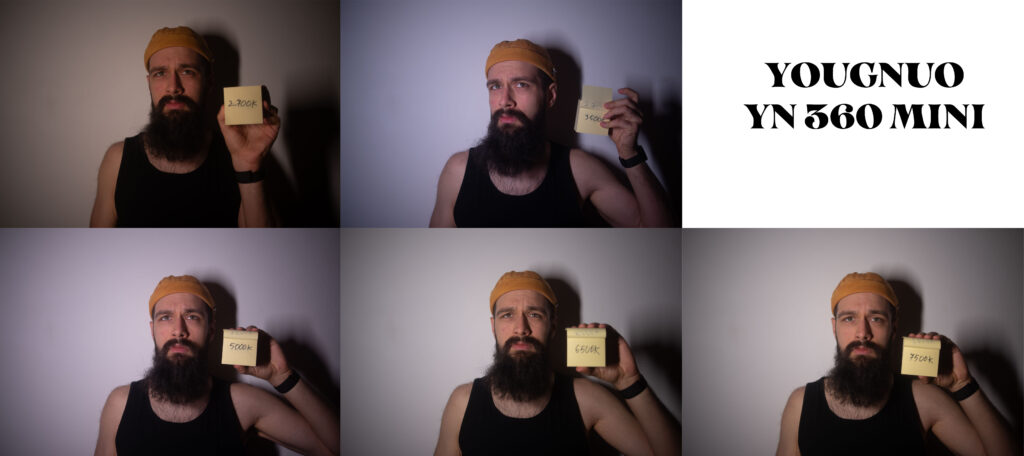
The last light that I tested was the Yougnuo YN360 mini. Even tho the light can go a bit further than my previous ones and reach 7500K because of the strong magenta tint it shows in the 3500K and 5000K I would classify it as unusable in that range. Especially if mixed with any other lights. It is safe to say that starting today I’ll probably only the Yognuo YN360 mini in its RGB mode, since the color shift is very pronounced with this one.
